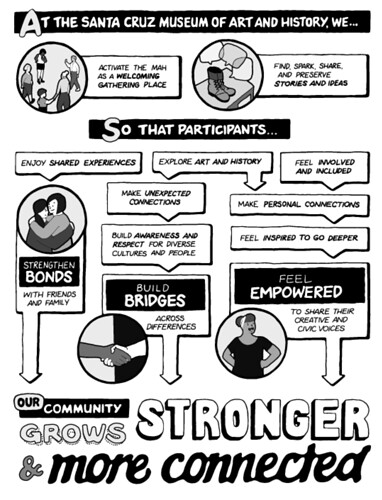I think our biggest area of improvement will come from incorporating the following feedback
Argument to make to funders is that you can’t just fund the activities. Invest in operations, invest in what change looks like, because impact is outsized for 10, 20, 30 years from now.
You’ve created so much in just how you’re organized. Youth leadership. Where does this young person need to be in 3-5 years? What’s the learning that you can give them now? We’re going to talk about finances, budget building, operations, hr, fundraising. We’re creating a leadership pipeline.
Leader is a person who sees where the organization is going and where the challenges are. Learning to lead is learning a way of life. Talking about upwards mobility and do you understand what change for yourself looks like for you in community? Can you describe what a good person is to you?
My frame is that’s not an educational conversation. How do we use our abilities to affect young people who are shaped to develop the best versions of themselves? No kid is going to get that in a k12 education or a 2, 4-year college, but what if in some of these programs you embed it within the way your program ran so that those kids don’t have to go to the 4-year education to run an organization. They can do that today. At 18 they already vote. Money. Where they make it, where they want to spend it. You have to teach that, too. What if you just did that with young people every day? Could you grow more Deborah Changs early to create a tsunami? We might not see that in 20 years, but 30 years. We’re not saying go start nonprofit organizations, we’re saying go out and lead fortune 500s, create a cure for cancer.
Why do we invest in the operations of organizations? It’s not about today, it’s about years later. The operations is the work. How you show your values.
Advice for expressing this: Android talks about the features (click here and click there). Apple talks about the why (what if you could talk to your grandparents). McDonald’s is not a burger shop. McDonald’s is a real estate company. YPC is not an advocacy shop (though we do that work as we practice our leadership), but it’s actually the entrepreneurial stuff that they will use now and into the future. They learn something here that they use in the future.
Example: Why should society invest in high-quality child care? Get left and right together to ask: What does this mean for your communities? kids? Lots of longitudinal studies - Harlem, Chicago - show that even though the impact of child care was negligible in-school, as adults, they contributed 16% for every dollar that was invested in them. Huge return. Case of ROI that we invest in 4, 5-year-olds that we didn’t see until 15, 20 years later. There’s a case to be made for why you lean into these values.
Talk about why today, but also create the story for why in 5 years, why in 10 years? What would they do, not only because they have changed but because the world has changed because of them?
Extrapolate from other organizations that have people development as a value. Why - give skills you can to folks so they can incorporate them into all of these kinds of work. They’re not going to be in your organization forever. That’s part of why - why are you doing this. The more people have the skills to participate in your organization today, the more they’re able to do in the future. Give skills in a different way. Well, how do we set up this organization? Not just regular HR - need people development and mental health support. How do you give them skills and places to practice that? Not just in your organization but also in other organizations? What kinds of benefits? How do you want to pay people?
You as an ED paid - you have 1 major job - you can’t think about this and something else. You have a very good story for here. “Where do you see yourself in 5 years and what are your aspirations for this organization?”
There are people who want to be the best functionally at x job. There are people who want to be leader with a sphere of influence. With leaders their title is undetermined, but that’s a different type of investment in the people work than the here’s how you use excel. I’m going to argue that if you invest in the leadership pipeline, you’ll get all the soft skills you need - the people skills are what workplaces are on today. Do you show up? Not that you’re playing in the system. You can’t change it unless you’re part of it. I will invest in people differently. I don’t want always leaders - I also want to run organizations. You don’t want great functional people being managers. Management should be a job in and of itself. There’s not enough time in the day.
– Vallay V.
